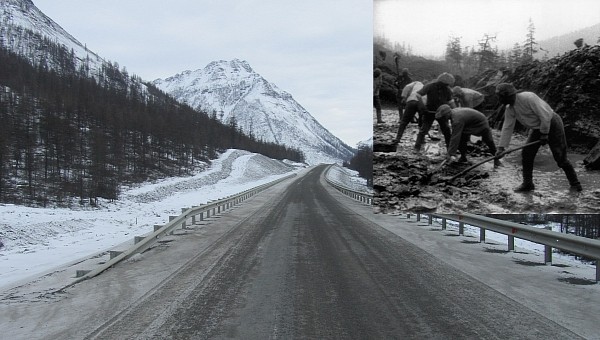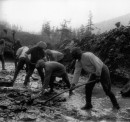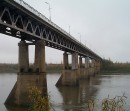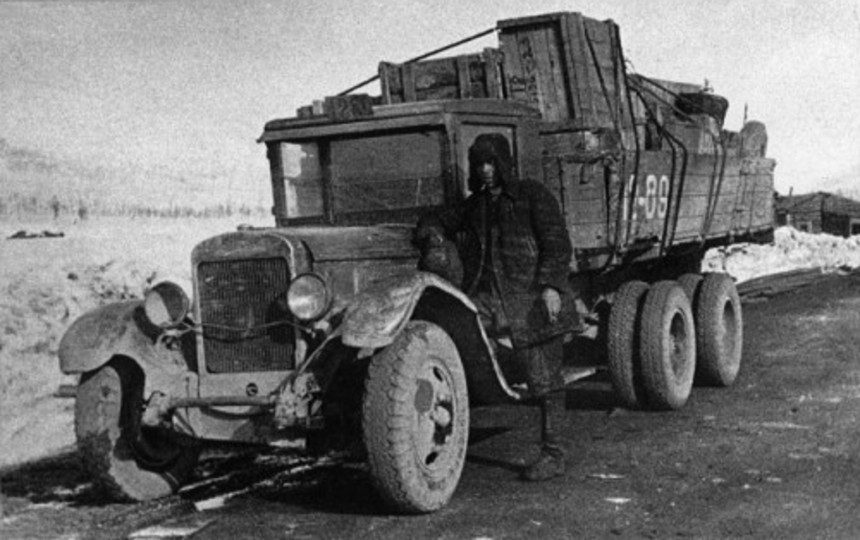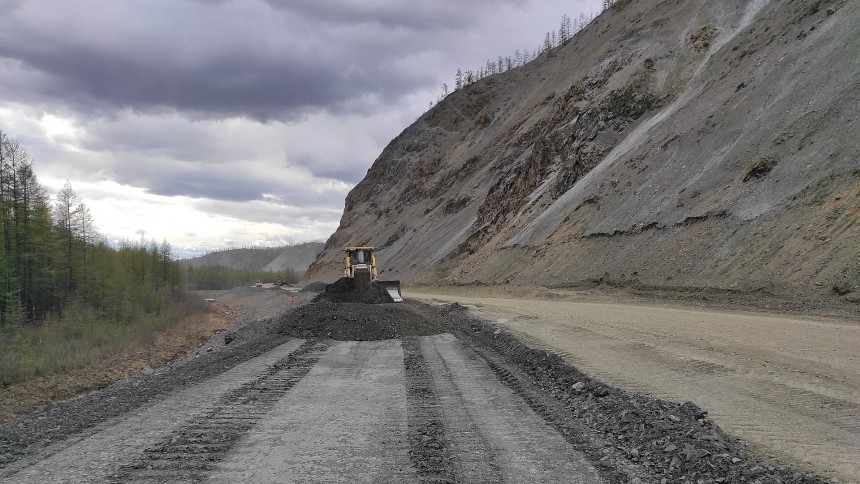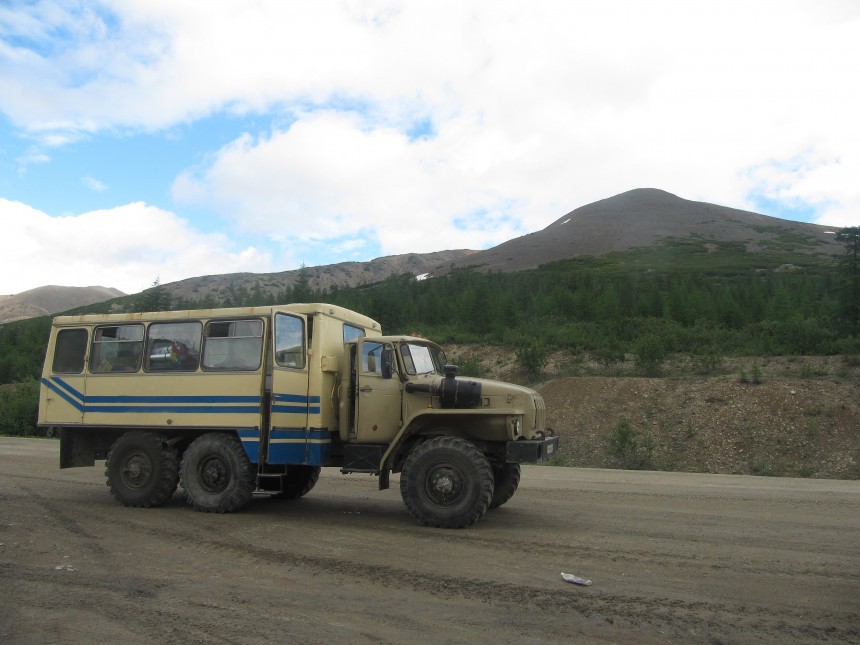Back in July 2022, we showcased a story about Interstate 90, America's longest interstate highway dotted with post-industrialized cities longing for days long past. It takes the brunt of horrifically strong winter storms from time to time as well. But nothing an American interstate has ever seen compares to what the Soviet equivalent saw. Where interstates were paved with hope, the Kolyma Highway was paved in blood.
The story of Russia's "road of bones" casts a focal point on the brutality of the Stalin-era Soviet regime in a way that puts the automobile front and center. To understand the conditions that caused this 2,031-kilometer (1,262 mi) long ribbon of only semi-paved roadway, we need to understand life inside the Soviet Union in the late 20s and early 30s.
By 1932, Joseph Stalin had already ruled the USSR with an iron fist for eight years, following the death of Vladimir Lenin. Within this new colossus of a superstate, the Russian SFSR accounted for 17,125,200 square kilometers (6,612,100 sq mi), filled with millions of citizens and needing to move resources and people across vast distances. What Stalin required in the early 1930s was a roadway system connecting locations along the Russian Far East, like the inland city Nizhny Bestyakh, to the port town of Magadan along the Sea of Okhotsk.
At a time when most Soviet farmers were lucky to have a motorized tractor, building a road that length was going to be a herculean effort regardless of the conditions. But this being Russia, weather conditions at the road's eastern terminus in Magadan can reach −38 degrees celsius (−36 °F) in the dead of winter. You'd be hard-pressed to find unionized construction workers in western nations willing to put up with those kinds of conditions.
But in the 1930s-vintage Soviet Union, things were a little different. Of course, pop culture's long made a trope of Soviet gulags and work camps. But rarely in western media is the sheer brutality of the Soviet prison labor system portrayed in a non-parodic and accurate way. The brutality displayed by the guards and even by the prisoners themselves in these Soviet forced labor programs parallels the very worst crimes against humanity of the 20th century.
It was these political prisoners, civil dissidents, and disenfranchised petty criminals who'd lay down their lives building the road to Magadan's mineral mines. Beginning on the banks of the mighty Lena river, this road would soon transport little else but miscellaneous fuel for the Soviet industrial machine. Because private industry was the equivalent of witchcraft at this time, a party-appointed construction conglomerate was chosen to oversee the project.
By modern sensibilities, the Far North Construction Trust, also known as Dalstroy, would be seen as little more than a state-sanctioned slave driver. By 1938, the organization was placed under the jurisdiction of the NKVD, better known as the Soviet state police. From the Sevvostlag labor camp in the Kolyma region of the Russian Far East, Dalstroy sourced hundreds of thousands of able-bodied prisoners to complete the construction of the highway.
In this far-off and desolate sector of Russia, the native topsoil is often covered in a thick layer of permafrost. Essentially large concentrations of carbon-based biomass and methane gas are locked inside layers of ice across thousands of kilometers. Though many of the Sevvostlag camp's inhabitants were natives of nearby Yakutsk, the pound-for-pound coldest inhabited place in the world, no human being can survive long doing hard labor in these nearly un-Earthly conditions.
It's estimated between 250 thousand and over one million forced laborers toiled building what's known in the modern Russian Federation as Federal Highway R504. Legend has it that when it became inefficient to bury every last dead prisoner's body, their bones were simply integrated into the gravel and loose asphalt of the road itself. The nature of the environment and the large gravel makeup of the road's surface meant heavy-duty trucks made the bulk of the route's road traffic.
The use of slave labor by Dalstroy continued through the Second World War until 1953, the year of Joseph Stalin's death. Today, large portions of the original roadway have been abandoned, with newer gravel pathways linking parts of the original road still in operation. To this day, the road still serves the same purpose it did in the days of Stalin, servicing the wealth of ore, primarily gold, that lies beneath the surface.
Occasionally, modern travelers on the road take detours on long-abandoned parts of the road. These people will promptly either get stuck on unmaintained roads or run out of fuel. More often than not, these people will freeze to death. The last known instance of this taking place was in 2020, when Google maps confused an old abandoned section of the road for a new one.
But besides mining trucks and the occasional army convoy rolling through town, the road of bones became one of the premiere overlanding trips in all of Russia after the fall of communism. 4x4s like Toyota and Ford pickup trucks but also native Lada Nivas and 6x6s have been known to travel over the gravel and permafrost on jaunts from the banks of the Lena river to challenging terrain further east. But thanks to the Russian invasion of Ukraine in 2022, this tradition has likely ceased.
For all the poverty, crime, and post-industrial turmoil in cities along America's longest highway, it's safe to say none of it compares to the savagery and the brutality of the Kolyma highway. If nothing else, it should make us westerners thankful to live where we do, and in the time we do. It could always be worse.
You could be digging through permafrost in the middle of the Russian Far East tundra, remember that.
.
By 1932, Joseph Stalin had already ruled the USSR with an iron fist for eight years, following the death of Vladimir Lenin. Within this new colossus of a superstate, the Russian SFSR accounted for 17,125,200 square kilometers (6,612,100 sq mi), filled with millions of citizens and needing to move resources and people across vast distances. What Stalin required in the early 1930s was a roadway system connecting locations along the Russian Far East, like the inland city Nizhny Bestyakh, to the port town of Magadan along the Sea of Okhotsk.
At a time when most Soviet farmers were lucky to have a motorized tractor, building a road that length was going to be a herculean effort regardless of the conditions. But this being Russia, weather conditions at the road's eastern terminus in Magadan can reach −38 degrees celsius (−36 °F) in the dead of winter. You'd be hard-pressed to find unionized construction workers in western nations willing to put up with those kinds of conditions.
But in the 1930s-vintage Soviet Union, things were a little different. Of course, pop culture's long made a trope of Soviet gulags and work camps. But rarely in western media is the sheer brutality of the Soviet prison labor system portrayed in a non-parodic and accurate way. The brutality displayed by the guards and even by the prisoners themselves in these Soviet forced labor programs parallels the very worst crimes against humanity of the 20th century.
By modern sensibilities, the Far North Construction Trust, also known as Dalstroy, would be seen as little more than a state-sanctioned slave driver. By 1938, the organization was placed under the jurisdiction of the NKVD, better known as the Soviet state police. From the Sevvostlag labor camp in the Kolyma region of the Russian Far East, Dalstroy sourced hundreds of thousands of able-bodied prisoners to complete the construction of the highway.
In this far-off and desolate sector of Russia, the native topsoil is often covered in a thick layer of permafrost. Essentially large concentrations of carbon-based biomass and methane gas are locked inside layers of ice across thousands of kilometers. Though many of the Sevvostlag camp's inhabitants were natives of nearby Yakutsk, the pound-for-pound coldest inhabited place in the world, no human being can survive long doing hard labor in these nearly un-Earthly conditions.
It's estimated between 250 thousand and over one million forced laborers toiled building what's known in the modern Russian Federation as Federal Highway R504. Legend has it that when it became inefficient to bury every last dead prisoner's body, their bones were simply integrated into the gravel and loose asphalt of the road itself. The nature of the environment and the large gravel makeup of the road's surface meant heavy-duty trucks made the bulk of the route's road traffic.
Occasionally, modern travelers on the road take detours on long-abandoned parts of the road. These people will promptly either get stuck on unmaintained roads or run out of fuel. More often than not, these people will freeze to death. The last known instance of this taking place was in 2020, when Google maps confused an old abandoned section of the road for a new one.
But besides mining trucks and the occasional army convoy rolling through town, the road of bones became one of the premiere overlanding trips in all of Russia after the fall of communism. 4x4s like Toyota and Ford pickup trucks but also native Lada Nivas and 6x6s have been known to travel over the gravel and permafrost on jaunts from the banks of the Lena river to challenging terrain further east. But thanks to the Russian invasion of Ukraine in 2022, this tradition has likely ceased.
For all the poverty, crime, and post-industrial turmoil in cities along America's longest highway, it's safe to say none of it compares to the savagery and the brutality of the Kolyma highway. If nothing else, it should make us westerners thankful to live where we do, and in the time we do. It could always be worse.
.
